SU272: Overthinking It - A Deep Dive on Rhubarb
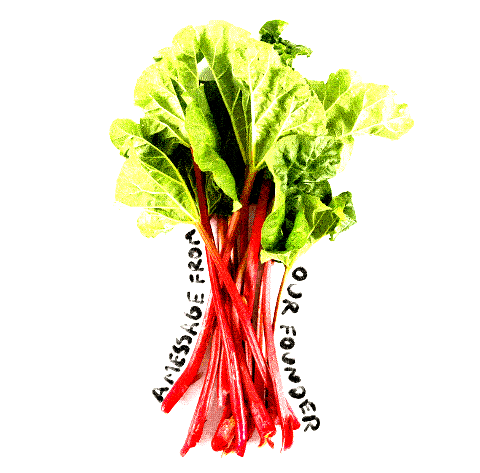
Introduction:
I can’t remember how the idea of doing research for friends originally came up - I was slightly drunk and elbow deep inside a gourd at the time. I think it was connected to my saying that I needed to look into academic discourse on It’s The Great Pumpkin, Charlie Brown! and see whether there were any parallels drawn between Linus and street prophets wandering around with “end is near” signs.
It occurs to me now that I am perhaps overthinking the cultural import of a 22 minute cartoon made in 1966. Likewise it occurs that the preceding sentence might contain a good name?
So here I am Overthinking It - a bit in which I am someone’s personal research assistant for a bit. Read on for way too much information about a lesser known dessert ingredient whose origins are confusing.
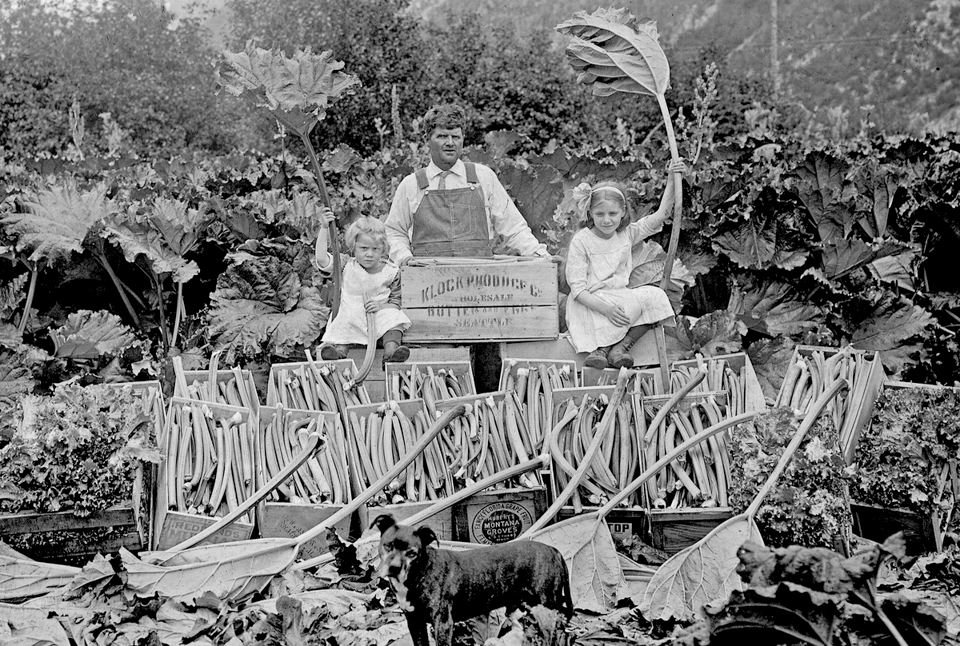
SO ANYWAY RHUBARB:
This week’s asker is Anabel Tergas, MD. I’ve known Anabel since college and she’s great. Her question is as follows:
We went to a farmer’s market this weekend with our au pair from Mexico. She bought a slice of strawberry rhubarb pie and we discussed how she had never heard of rhubarb before. I said that I had also never heard of rhubarb until I went to Illinois to meet Luke’s family in my mid-20s. I remember at the time being completely perplexed by wtf rhubarb is an wtf does it always have to be added to strawberry pie - and frankly I’m still perplexed?
I had a similar experience and similarly only learned about rhubarb from visiting family. My grandmother grew it in her yard in Delaware and I am pretty sure the first time she said the word “rhubarb” I had absolutely no idea what consonants and vowels were being formed (or attempted to be formed) in her mouth. After moving to the northeast and living with an old friend who bakes, I became more acquainted with it and made rhubarb syrups for cocktails because I live in Brooklyn and making alcoholism twee is a thing we do here.
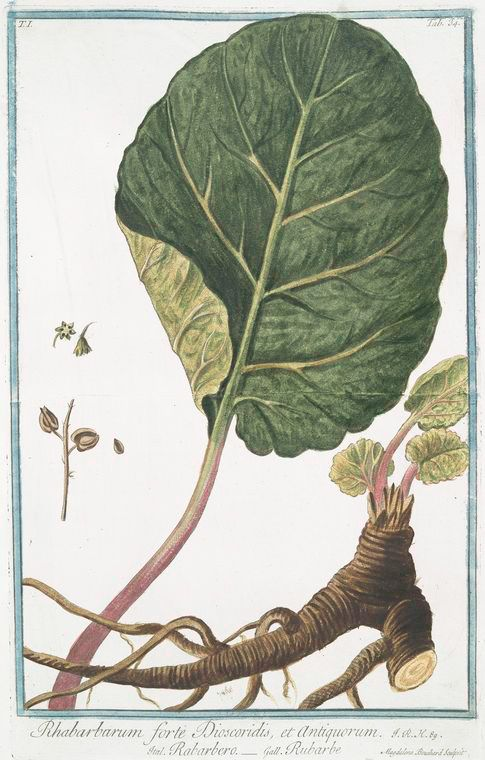
Origin:
The original source of modern culinary rhubarb is … well, no one knows, apparently? It’s a hybrid, that much is for sure, of plants that were grown for medicinal purposes in Europe after being brought from China. It’s a giant pain in the ass to transport (as opposed to say cinnamon, saffron, or opium) leading to attempts at cultivating it locally that mostly failed.
Its primary medicinal use was butt stuff. Diarrhea? A little root of rhubarb. Constipation? A lot of root of rhubarb. People were crazy about it in the 1500s as international trade became a thing but clean water didn’t. Russia attempted to corner the market on medicinally “good” rhubarb coming from China but it seems that what made it better isn’t entirely known and could just be the result of good marketing. It does not help that the rhubarb of the time did not grow “true” from seed (or maybe someone who sold you the seed was lying about what plant they were actually from) and as such it’s hard to tell exactly what was in all these tinctures people were taking when they couldn’t shit.
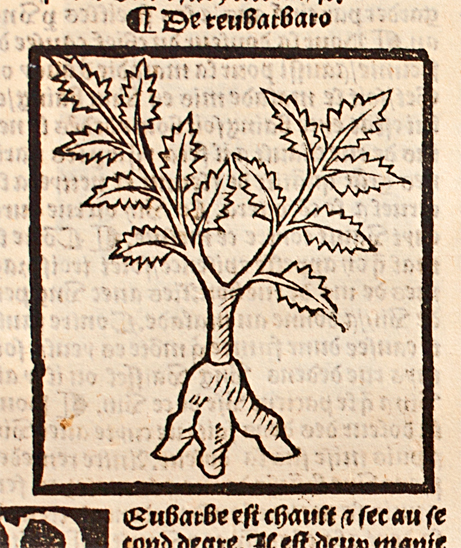
What changed rhubarb from a medicinal poop root to a stalk used in tarts was colonialism. More specifically: the entrance of sugar into the daily life of middle class Europeans. This came along with a general consensus that the stalks of “Siberian Rhubarb” were superior to “Chinese Rhubarb” for the purposes of eating and the eventual hybridization/bastardization of the two in European gardens.
It is worth noting that this evolution from poorly sourced commodity to regional baking ingredient is, for lack of a better term, weird! For a fun dive into this weirdness, I suggest Locating Rhubarb - Early Modernity’s Relative Obscurity by Erika Monahan and I am indebted to that text for much of the above.
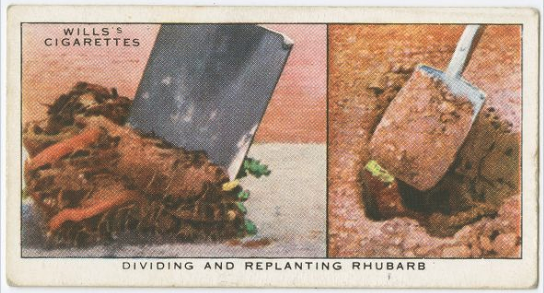
Modern Times:
There is an insane level of obsessiveness when it comes to documenting the contents of English gardens and I am not going to discuss different methods of cultivation (outdoors, greenhouse, ’forcing’ in the total darkness of giant sheds in Yorkshire like some kind of pastoral horror movie where people get murdered with farm tools). I however feel it necessary to note that if you ever find yourself here:

… you’re gonna die.
Here in the former colonial holding, half of all the rhubarb grown comes from just south of Tacoma, WA. The remainder comes from Wisconsin and Oregon - all of which is confusing as I mentally conflate it with New England but I guess growing conditions there are a little closer to Yorkshire than Massachusetts is.
Ok great but why is it in pie
Because what the heck else are you going to do with it when your attempts at making a cheaper medicinal tincture failed? And what else are you going to make a pie with if you don’t have access to fruit? And if you’re in New England and you ARE harvesting fruit, it just so happens strawberries are harvested right at the same time as rhubarb and the tartness of the two complement one another well. Also if your strawberry yield is paltry, nothing like more easily grown rhubarb to stretch it out.
So yeah. At some point rhubarb went from medicine to food, as many things did as modernity progressed and we stopped doing stuff like putting leeches on people. Rhubarb pie became a thing in Victorian England such that it was known as “the pie plant” and a specific cultivar was named for Queen Victoria.
Miscellanea:
Etymologically rhubarb seems to combine rha (ancient name of the river Volga in Russia) and barb (foreign, as in “barbarian”) - basically meaning “from way the hell east.” Also I forgot that it’s slang for nonsense and never knew that it was a word sportscasters used to refer to fights.
Good band names: Rhubarb Forcer, Hothouse Rhubarb
Weirdest Thing I Found: rhubarb torch juggler
National Strawberry Rhubarb Pie Day is apparently June 9th so mark your calendars, people.
How Alaska Became Home to Humongous Rhubarb. Turns out the land of the midnight sun is a good place to grow rhubarb.
If you made it this far, here’s where I suggest you pose your own question to cover here
Just reply to this email. Or text me. Or, I dunno, smoke signal or semaphore or something. You can figure it out.

links:
You don't have to swallow frogs. This is a good read on the ongoing failures of pundits in this political moment.
The history of subminiature vacuum tubes - the teeny tiny glass predecessor to the solid state transistor.
How do normal people survive? (Answer: they depend on the kindness of nerds)
FAQ for wedding etiquette. This is a much better read than you may expect.
NYC ballot proposals guide. City Council is freaking out over having their power over zoning taken away but if Brad Lander is for it I suppose I am too.
The guy who made the wearable AI companion (that’s getting incredibly poor reviews) has no interest in talking to real human beings and I can’t imagine why.
closing thought
I feel like strawberry rhubarb pie gets by on novelty at this point.
Sincerely,
John P. Spain
Lead Guitar, Rhubarb Forcer

JohnSpainCo - PO Box 150272 Brooklyn NY 11215
